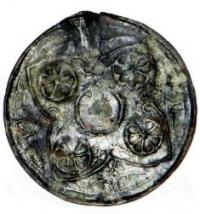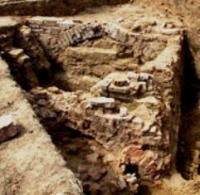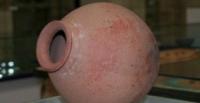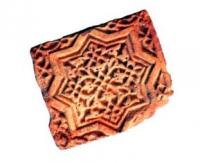You are here
Zhaiyk ancient settlement.






Ancient sites of ancient settlement of West-Kazakhstan area.
"The difference is observed only in some details of in terior, heating system, building methods and construction materials. The hammam baths are of great interest among those public buildings, discovered and researched at the site of the Zhaiyk ancient settlement. Baths played an important role in the life of the people of those times"
Trip to Zhaiyk ancient settlement.
During the 2001 - 2002 research, two sites of ancient settlements along the river Ural river, near the city of Uralsk, were discovered. Archaeologists focused on excavations of the ancient settlement sites, located on the right bank of Ural at the foot of the Svistun mountain, 12 km to the east of the city of Uralsk, which they named Zhaiyk.
This site of had no fortifications, such as moats, walls, and berms.
Ravines and the river banks were its natural borders. The area of Zhaiyk comprised 7 - 9 ha. Comparing the layout and technical methods of house construction, the scientists came to the conclusion that the house building traditions of Khoresm and Syr Darya region had greatly influenced the construction culture of the Ural river basin.
The house plans mimicked the ones present in Urgench, Otrar, and Turkestan in the XIII - XIV century. The difference is observed only in some details of in terior, heating system, building methods and construction materials.
The hammam baths are of great interest among those public buildings, discovered and researched at the site of the Zhaiyk ancient settlement. Baths played an important role in the life of the people of those times.
Baths enjoyed wide popularity and, after a mosque, were the second favorite place in the eastern cities. In the XIII - XIV century, public baths on the territory of Asia were re-planned to meet one common standard.
The central chamber of a bath had quadrangular and octagonal shapes. The basement of the whole construction was entrenched into the ground. On the east and west it featured small adjacent rooms. The water eating pipes were placed under the floors of all inner rooms.
Water to washing rooms was supplied through a net work of earthenware ducts or wells. The water was heated in an iron caldron, and then distributed to washing rooms, all of which had different temperature regimes.
The water was drained through a system of connected ducts into pits, located outside the bath. Presence of public baths in ancient settlements is the evidence of a town's status. It means that archeologists should look for palaces, mosques, caravanserais, and bazaars on the ruins of these ancient towns.
Near the ruins of Zhaiyk, about 1,5 km to the east of the town, archaeologists discovered the town's necropolis. It used to house the mausoleums, erected on the site of burial grounds of prominent people. Archeological excavated a two-chamber (two-room) mausoleum, built from burnt brick and cased with glazed tiles, bearing golden inscriptions.
Pottery, glass production, jewelry art, ironworks and brick-burning art were developed in Zhaiyk, as many other ancient centers. Ceramic ware is the main artifact found here. They excavated slipware, non-slipware pottery and household items in Zhaiyk. During the excavations, they discovered the coins of the first half of the XIV century.
The scientists were curious if there was any sign of written records in the town of Zhaiyk. For that purpose, they studied all map materials available to them. The most detailed map was the map drawn in the Golden Horde in 1367.
The map was drawn by Italian merchants, brothers Francisco and Domenique Picigani. One more settlement, located "to the east of Laeti" (a settlement, located on the shore of the Caspian Sea between Volga and Ural), is marked on it.
To the north of that settlement, a nameless town is marked. Judging by a large picture of towers and flying flag, it was a large economic and administrative centre. The first town on the river Yaik can surely be identified as Saraichik.
The second nameless town, to the north from Saraichik, on the right bank of the river, could well be the ancient settlement of Zhaiyk. The ruins of the ancient settlement are surrounded by many mysteries.
The research and study of the urban culture on the banks of the Ural river and in Western Kazakhstan is on its way. Archeologists have explored only two towns.
Though, as excavations go along, the number of such towns will increase, since the Uralsk trade route, which passed along the banks of the Zhaiyk settlement (Ural) from the Caspian Sea to the Trans-Ural region, prompted the development of urban culture in the Uralsk region.
It is no accident that the XVII century Osman writer Evlia Chelebi, describing his trip on the river, says that Zhaiyk "passed through hundreds of settlements and thousands of fortifications and, at last, flows into the Caspian Sea".
Certainly, he exaggerated the scale of urban life and was describing the ruins of ancient settlements and towns, which are yet to be discovered and researched by archeologists, however it is clear that there was a large region of urban culture in Western Kazakhstan, on the banks of the river Ural near the city of Uralsk in the medieval times.
Authority:
The guidebook across Kazakhstan. The edition of the ministry of tourism and sports.







